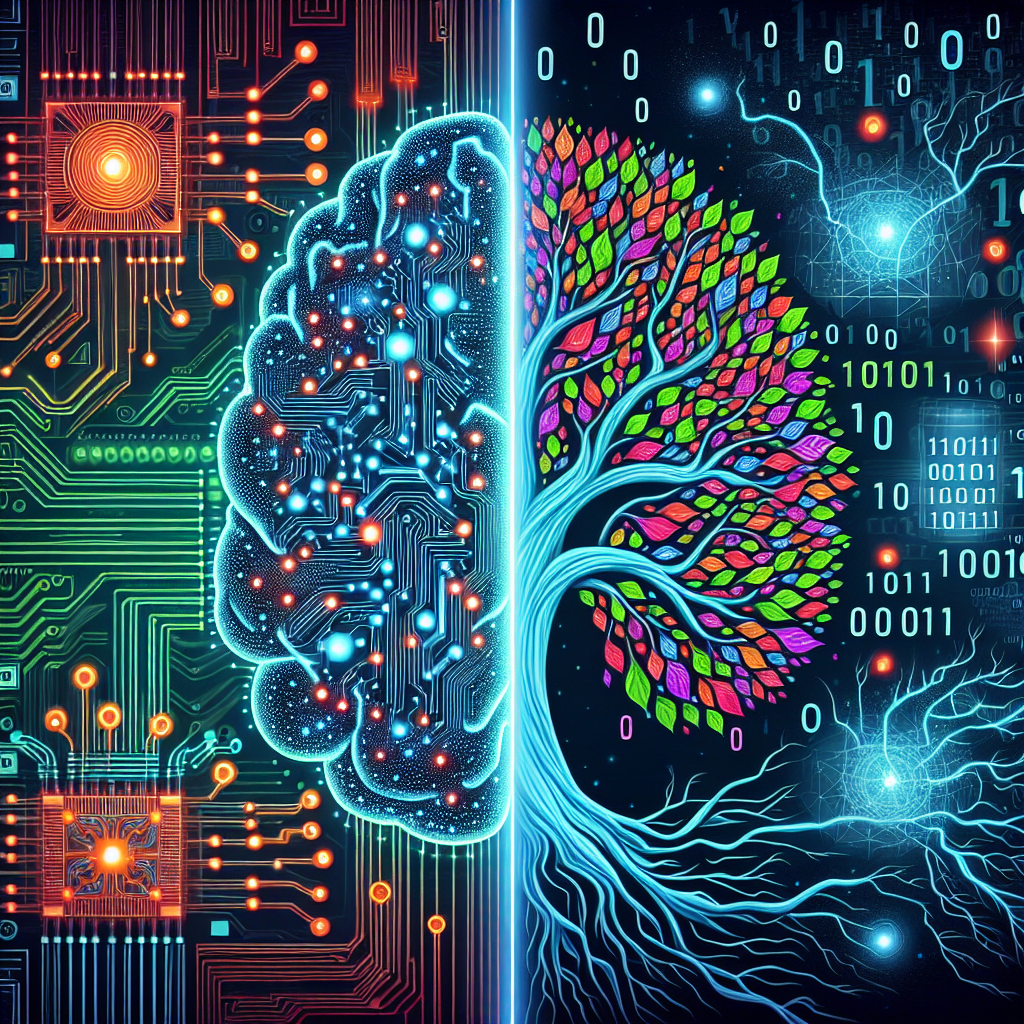Artificial Intelligence (AI) and Machine Learning (ML) are two closely related but distinct fields that are revolutionizing the way we interact with technology. While both terms are often used interchangeably, they actually refer to different concepts and have distinct applications. In this article, we will explore the differences between AI and ML, their respective strengths and weaknesses, and how they are shaping the future of technology.
AI vs Machine Learning: What’s the Difference?
Artificial Intelligence is a broad term that encompasses the development of machines or systems that can perform tasks that typically require human intelligence, such as problem-solving, decision-making, and language processing. AI systems are designed to mimic human cognitive abilities and can be used in a wide range of applications, from self-driving cars to virtual personal assistants.
Machine Learning, on the other hand, is a subset of AI that focuses on the development of algorithms and models that can learn from data and make predictions or decisions without being explicitly programmed. ML systems use statistical techniques to identify patterns in data and make predictions based on those patterns. Machine Learning is a more specific and technical field within AI, and many AI applications rely on ML algorithms to function.
Strengths and Weaknesses of AI and ML
Both AI and ML have unique strengths and weaknesses that make them suitable for different types of tasks and applications. Understanding these differences can help organizations and developers choose the right approach for their specific needs.
Strengths of AI:
1. Versatility: AI systems can be applied to a wide range of tasks, from image recognition to natural language processing, making them highly versatile.
2. Adaptability: AI systems can adapt to new data and learn from experience, making them well-suited for dynamic environments.
3. Problem-solving: AI systems can solve complex problems and make decisions in ways that are similar to human intelligence.
Weaknesses of AI:
1. Data dependency: AI systems require large amounts of high-quality data to train effectively, which can be a barrier for organizations with limited data resources.
2. Interpretability: AI systems can be opaque and difficult to interpret, making it challenging to understand how they arrive at their decisions.
3. Scalability: AI systems can be computationally expensive and difficult to scale, particularly for applications that require real-time processing.
Strengths of Machine Learning:
1. Efficiency: ML algorithms can process large amounts of data quickly and make predictions in real-time, making them well-suited for applications that require fast decision-making.
2. Accuracy: ML algorithms can identify patterns in data and make predictions with a high degree of accuracy, making them valuable for applications that require precision.
3. Automation: ML algorithms can automate repetitive tasks and reduce the need for manual intervention, improving efficiency and reducing human error.
Weaknesses of Machine Learning:
1. Bias: ML algorithms can be biased if the training data is not representative of the real-world population, leading to unfair or inaccurate predictions.
2. Overfitting: ML algorithms can overfit to the training data, making them less generalizable to new data and potentially reducing their effectiveness.
3. Interpretability: Like AI systems, ML algorithms can be difficult to interpret and understand, making it challenging to trust their decisions in critical applications.
Applications of AI and ML
AI and ML are already being used in a wide range of applications, from business intelligence to healthcare and beyond. Some common applications of AI and ML include:
1. Predictive analytics: ML algorithms can analyze historical data to make predictions about future trends or events, helping organizations make informed decisions.
2. Natural language processing: AI systems can understand and generate human language, enabling applications such as chatbots, virtual assistants, and language translation.
3. Image recognition: ML algorithms can analyze images and identify objects or patterns within them, enabling applications such as facial recognition and autonomous vehicles.
4. Fraud detection: AI systems can detect patterns of fraudulent behavior in financial transactions, helping organizations prevent fraud and protect their assets.
5. Healthcare diagnostics: ML algorithms can analyze medical data to diagnose diseases and recommend treatment options, improving patient outcomes and reducing healthcare costs.
FAQs
Q: What is the difference between AI and machine learning?
A: AI is a broad field that encompasses the development of machines or systems that can perform tasks requiring human intelligence, while machine learning is a subset of AI that focuses on developing algorithms that can learn from data and make predictions without being explicitly programmed.
Q: How are AI and machine learning being used in business?
A: AI and machine learning are being used in business for a wide range of applications, including predictive analytics, natural language processing, image recognition, fraud detection, and healthcare diagnostics.
Q: What are the strengths and weaknesses of AI and machine learning?
A: AI systems are versatile, adaptable, and capable of problem-solving, but they are data-dependent, difficult to interpret, and challenging to scale. Machine learning algorithms are efficient, accurate, and automate repetitive tasks, but they can be biased, prone to overfitting, and difficult to interpret.
Q: What are some common applications of AI and machine learning?
A: Some common applications of AI and machine learning include predictive analytics, natural language processing, image recognition, fraud detection, and healthcare diagnostics.
In conclusion, AI and machine learning are two powerful technologies that are reshaping the way we interact with technology and the world around us. While they have distinct strengths and weaknesses, both AI and ML have the potential to revolutionize industries and improve the quality of life for people around the globe. As these technologies continue to evolve, it will be essential for organizations and developers to understand the differences between AI and ML and choose the right approach for their specific needs.

